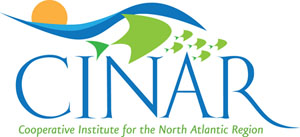Commentary, by Peter G. Wells
Silent Spring, widely considered to be one of the most influential books of the 20th century, celebrates its 50th anniversary this year. It was penned by Rachel Carson, a former US Fish and Wildlife Service marine biologist then working independently due to the success of her other publications – Under the Sea-Wind, The Sea Around Us, and The Edge of the Sea.
All of Carson’s books are still in print. Silent Spring, initially featured in the New Yorker and published in September 1962, became an instant best seller; it describes the rampant use of pesticides and the ecological effects that they may have on wildlife and supporting food chains.
So why is the book still so famous and what influence has it had on individual lives and society as a whole? As you read this note, think about whether the book or Carson’s other classics have had an impact on your personal life. For me, Silent Spring was required reading in my first ecology course at McGill (1966-67), and was read and reread. I found the book both informative and infuriating. It was well researched and was (and still is) a good introduction to environmental toxicology. It provided evidence of the harmful effects on wildlife and humans of many pesticides, and the wilful role of the chemical and agricultural industries in their over use and misuse, to the detriment of environmental quality. The book’s messages (control toxic chemicals, understand their impacts on both humans and wildlife, protect ecosystems from the bioaccumulation of poisons) became the imperative to chose a career in marine environmental science.
At the time, Rachel Carson became an icon for many persons in the nascent environmental field; the 1960s and 1970s were a period when the motives and policies of governments and industries were publicly suspect and eco-activism was very strong. The book stimulated much discussion about pesticide use and the increased degradation of terrestrial and aquatic ecosystems from many causes. Carson faced considerable opposition from the chemical industry, but the work published in many languages formed part of the engine of “environmental revolution” in the 1960s and 1970s. Most importantly, discussions about the book and its implications within governments in North America and beyond led to new legislation and new institutions. Within a few years, there was the US Environmental Protection Agency (EPA), Environment Canada, new legislation (in Canada, a revised Fisheries Act, the Ocean Dumping Control Act, the Contaminants Act, and eventually the Canadian Environmental Protection Act), and internationally, Earth Day, the 1972 Stockholm Conference on the Human Environment, the United Nations Environmental Programme, and the United Nations Convention on Law of the Sea. As well, new environmental and conservation groups started, such as Greenpeace and Friends of the Earth, or were strengthened due to increased public awareness about the value of healthy wildlife and ecosystems. These institutions and groups are mostly still operating, despite constant challenges of funding and politics.
Carson’s legacy includes her books, groups formed to celebrate her, coastal lands protected in her name (e.g. such as the National Wildlife Refuge along the southern coast of Maine), and inspiration from her example. We are fortunate now to live in an era of millions of persons and thousands of groups working on behalf of the environment. Carson’s legacy remains strong and deserves special recognition in this 50th anniversary year of her most famous work, Silent Spring. So if you can, read or revisit the book, reflect on the messages, gain strength from remembering Carson’s commitment to the environment, and renew your personal commitment to whatever role you are playing in protecting and conserving nature in its fullest. Individually and together, we can continue to make a difference in this quest, as shown by a courageous lady writing an environmental classic many years ago.
Peter G. Wells is on the faculty of the School for Resource and Environmental Studies and Marine Affairs Program, and International Ocean Institute, Dalhousie University, Halifax, NS.
Print


















